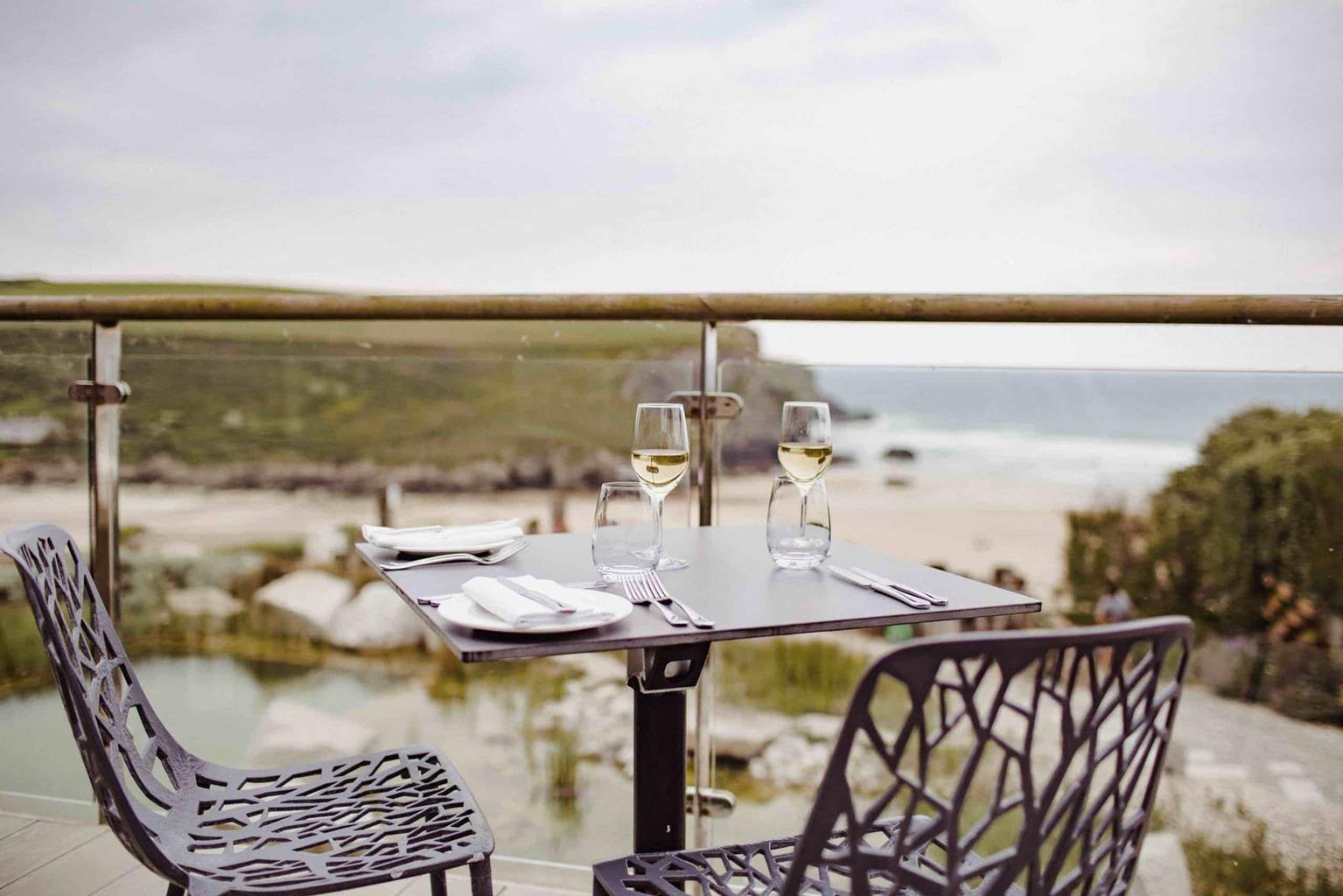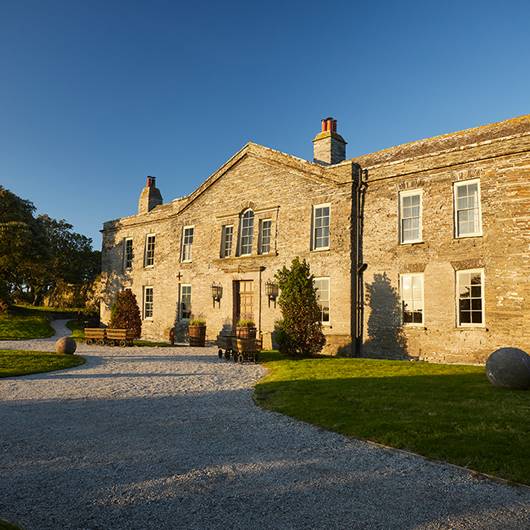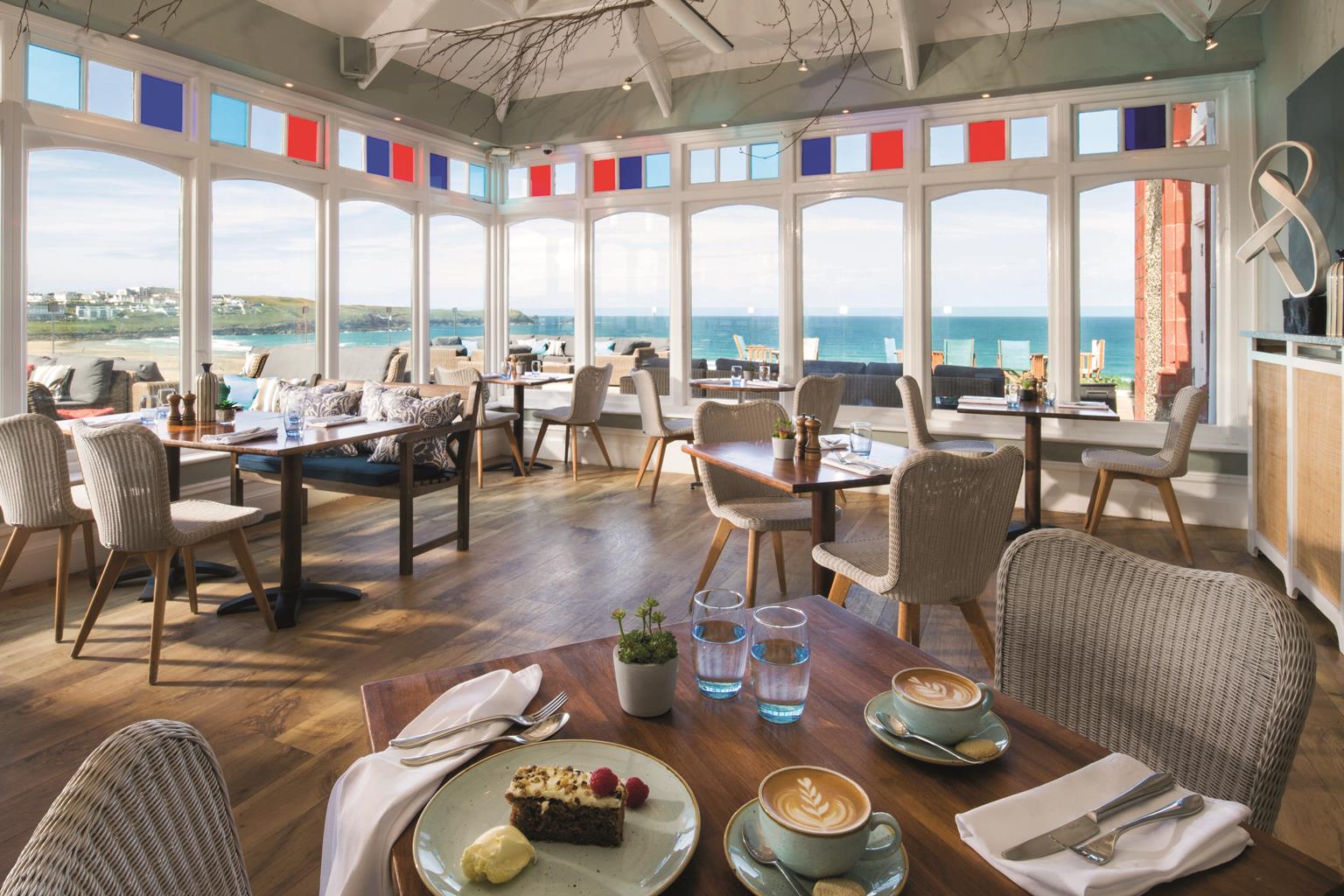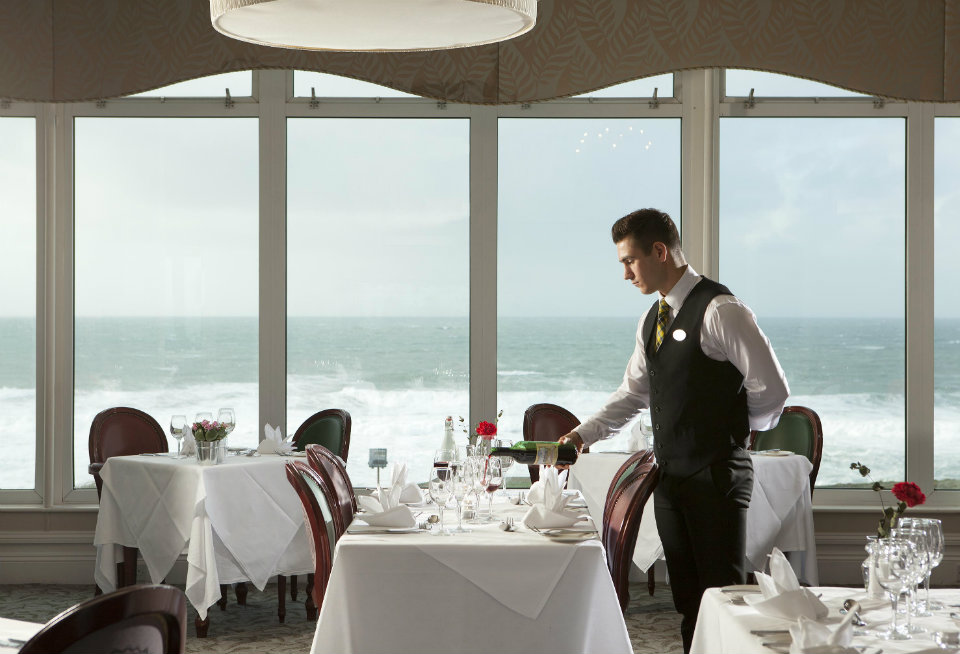On the dramatic coastline between Padstow and Newquay, 3 Trehelles is in the tranquil village of…
Exploring Bedruthan and Park Head

Spectacular cliffs and dramatic sea stacks
4.5 miles (7.2kms)
About the walk
The flat, unremarkable countryside that lies inland from Bedruthan Steps belies the stupendous nature of the area's coastline. Green fields run to the sliced-off edges of 300ft (90m) cliffs. At the foot of the cliffs lie dramatic rock islands that at high tide are besieged by crashing waves and at low tide spring from a smooth expanse of golden, sea-damp sand. This was Victorian 'picturesque' at its most melodramatic and the area was popular with 'excursionists' in the late 19th century. The islands, or stacks, are portrayed as being the stepping stones of a legendary giant called Bedruthan, but this conceit blew in with the first of the Victorian tourists. The stacks acquired picturesque names such as 'The Queen Bess Rock', which, before losing its head to erosion, was said to resemble the figure of Elizabeth I, who never lost her head in any sense.
For many years, before tourists and tall tales of giants, there were flights of steps cut into the cliff faces below Carnewas and further north at Pentire in the crook of coastline south of Park Head. These staircases were known as Carnewas Steps and Pentire Steps and were probably used by local people to collect seaweed and to land cargoes, legitimate or otherwise. During the 19th century, when the mines at Carnewas were in use, the miners may also have sought access to the beach as the tin, copper and lead may have originally been extracted from tunnels, known as adits, at the base of the cliffs. (The National Trust shop and tea room are housed in old mine buildings).
Until recently, you could access the beach via Bedruthan Steps, however coastal erosion and rock falls have led to the steps being closed for safety reasons at the time of print.
From near the top of the steps the coast path leads north towards Park Head passing, on the way, the vestigial remains of Redcliff Castle, an Iron Age fortified settlement whose landward embankments are all that remain of a protruding headland long since collapsed into the sea. From beyond Redcliff Castle, one of the finest views of Bedruthan Beach can be had; do not go too close to the cliff edge. The circuit of Park Head, via the pleasant cove of Porth Mear, rounds off the walk. You can walk out to the promontory of Park Head itself, passing through the defensive banks of another Iron Age fortified settlement across the neck of the headland. From here the coast path leads back past Redcliff Castle and then on towards Carnewass
Walk directions
From Carnewas car park, go through a gap in the wall on the right of the National Trust shop, then, in a few paces, bear off to the left at a junction. Follow the path, keeping left to a crossing of paths beyond a gap in a low embankment and go straight across and down a grassy path for the dramatic view from Carnewas Point of Bedruthan Beach and the sea stacks. Return to the crossing and follow a path left along the cliff edge. (Take heed of warning notices.) At a junction with a cobbled path, go left and descend to a dip at Pendarves Point.
At a junction in the dip, carry straight on, passing the closed access to the steps and walk alongside a wooden fence, below a parking area, and then past the overgrown embankments of Redcliff Castle.
Where the path forks by a National Trust signpost marked 'Park Head', follow either fork to where they rejoin. Keep to the right of a stone wall that has tamarisk trees sprouting from it, to reach a wooden kissing gate. Continue along the open cliff top to reach a set of wooden gates on the right.
Go right through the kissing gate, then follow a permissive footpath along field-edges. Just before the buildings at Pentire, go right through a gate and follow field-edges to Park Head car park.
Turn immediately left and go down a surfaced lane. Just before the Pentire farm buildings go through a gate on the right, signposted 'Porth Mear Beach and Park Head'. Bear left across the field to a stile and gateway. Bear right down the next field to a wooden kissing gate in its bottom corner. Go through the gate and follow a path through a wetland area to join the coast path above the attractive Porth Mear.
Keep left and follow the coast path steadily uphill through a kissing gate and then round Park Head. Take care when close to the cliff edges. At a stone monument above High Cove, divert right to the promontory of Park Head itself. Return to the plaque and follow the coast path south to waypoint 4. Retrace your steps to the start.
Additional information
Coastal paths and field paths; coast path very close to unguarded cliff edges in some places; take care in windy weather and with children and dogs
Spectacular cliffs and dramatic sea stacks
Dogs on lead through grazed areas
OS Explorer 106 Newquay & Padstow
National Trust car park at Carnewas or at the National Trust Park Head car park
Carnewas car park
WALKING IN SAFETY
Read our tips to look after yourself and the environment when following this walk.
Find out more
Also in the area
About the area
Discover Cornwall and Isles of Scilly
Cornwall has just about everything – wild moorland landscapes, glorious river valley scenery, picturesque villages and miles of breathtaking coastline. With more than 80 surfing spots, there are plenty of sporting enthusiasts who also make their way here to enjoy wave-surfing, kite surfing and blokarting.
In recent years, new or restored visitor attractions have attracted even more visitors to the region; the Eden Project is famous for its giant geodesic domes housing exotic plants from different parts of the globe, while nearby the Lost Gardens of Heligan has impressive kitchen gardens and a wildlife hide.
Nearby stays
Restaurants and Pubs
Nearby experiences
Recommended things to do
Why choose Rated Trips?
Your trusted guide to rated places across the UK
The best coverage
Discover more than 15,000 professionally rated places to stay, eat and visit from across the UK and Ireland.
Quality assured
Choose a place to stay safe in the knowledge that it has been expertly assessed by trained assessors.
Plan your next trip
Search by location or the type of place you're visiting to find your next ideal holiday experience.
Travel inspiration
Read our articles, city guides and recommended things to do for inspiration. We're here to help you explore the UK.













